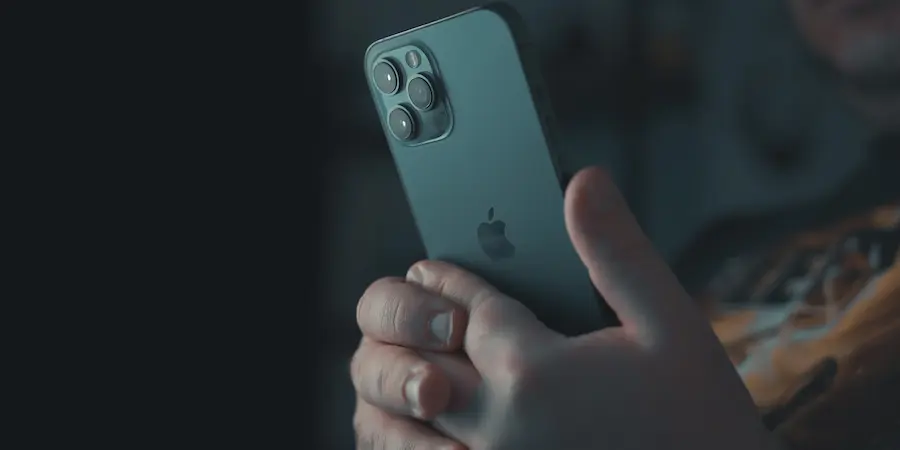Do you notice your smartphone doing strange things, heating up for no reason, or burning data as if there were no tomorrow? The concern is legitimate: today, mobile spying no longer requires wires in the wall, and there are signs that can reveal the presence of spyware or an interception of your communications. Here we explain how to detect signs, what steps to take if you suspect you’ve been tapped, and how to harden yourself for the future, with clear and practical recommendations. Ready to take back control?
Signs your smartphone may be tapped
When a phone is compromised by surveillance software, it usually leaves traces. These are the most common clues you should watch for:
- Battery draining or heating without use: spyware can record audio, log activity and upload it to a server, which spikes power consumption. Check which apps are devouring battery in Settings > Battery (iPhone and Android).
- Unusual data usage: if your gigabytes disappear without changing your habits, a process may be sending logs or recordings. Check it on iPhone (Settings > Mobile Data) and on Android (Settings > Network & Internet/Connections > Data usage > Mobile data usage).
- Strange behavior: the screen turning on by itself, random icons or pop‑up windows appearing, powering off/on without being touched, or apps installing that you don’t remember, suggests remote control. It’s like seeing processes “zombie” on Linux: they shouldn’t be there.
- Pop‑ups and ads outside the browser: adware and other malware can inject alerts or suspicious links. Be wary of messages pushing you to click unknown URLs or to pay to “clean” a virus.
- Apps you don’t recognize: scrutinize the full list in Settings > Apps. Some innocuous names disguise commercial spy tools. For example, seeing “SyncManager” can indicate the presence of FlexiSpy.
- Camera or microphone active without reason: on iPhone, a green dot (camera) or orange dot (microphone) at the top notifies you; on Android 12 or higher you’ll see similar indicators in the top right corner. On earlier Android versions you can use Access Dots. Note: advanced spyware like Pegasus can operate without visible signs.
- Suspicious profiles or device administrators: certain device profiles grant extra privileges to spy apps. Check this on Android (Settings > Security & privacy > Device administrators) and iPhone (Settings > General > Profiles or Device Management). If something doesn’t match, disable or remove the profile; in some cases only a full reset will remove it.
And what about landlines? Anomalous noises are no longer definitive proof, although checking sockets, telephone junction boxes or added cables can give clues; certain RF bugs are detected with a wide‑range radio frequency analyzer.
What to do if you suspect you’re being spied on
If something seems suspicious, act methodically to limit damage and regain your privacy:
- Cut communications: enable airplane mode and turn off Wi‑Fi. This blocks the alleged spyware from continuing to send data while you get organized.
- Factory reset: on both iPhone and Android, a full wipe usually removes spyware installed on the device. Keep in mind this does not affect interceptions at the operator level.
- Check profiles and administrators: before or after the reset, remove any administration permissions you don’t recognize in the Settings paths indicated above.
- Contact your operator if it’s a landline: they can perform a line analysis that detects most tampering. If they refuse, there may be an official requirement in progress.
- Go to the police if you have solid indications: they have tools to verify devices. If there is personal risk, seek help in person and avoid using the compromised phone.
- Use a prepaid “burner” phone for sensitive communications: bought without identification, it reduces your footprint, though it doesn’t make you invisible to law enforcement.
- Be wary of unexpected “technicians”: if someone shows up without being requested, verify by calling your operator’s official number (not the one they give you).
For landlines, also visually inspect sockets and the exterior box; any sign of tampering or extra cables is suspicious. Commercial radio frequency bugs usually fall into ranges that a wide‑spectrum RF detector (up to 24 GHz) can identify.

How to harden your phone for the future
The best defense is good digital hygiene, applied consistently (and yes, with a sysadmin Zero Trust mindset, as if you were inspecting packets with Wireshark):
- Physical control: don’t leave your phone out of sight or lend it. Many infections require direct access even if brief.
- Install apps only from the App Store or Google Play: avoiding external sources drastically reduces the risk of installing spyware.
- Trusted antimalware: on Android, tools like Malwarebytes allow on‑demand scanning and proactive system monitoring.
- Enable two‑step verification (2FA) on all your accounts: it adds an extra barrier even if your password is compromised.
- Strong passwords and passphrases: use a generator/manager (for example, Firefox’s) and create long passphrases with a variety of characters. Constantly changing them without reason is no longer recommended; aim for at least 16 characters, according to CISA guidelines.
- Beware of phishing and spear‑phishing: SMS or emails that appear trustworthy can contain trap links to install spyware or steal credentials. There is also phone phishing; always verify through official channels before doing anything.
- Travel and inspections: consider using a PIN or passcode instead of biometrics, which can facilitate access during inspections; consider carrying a “throwaway” phone or doing a factory reset before traveling.
Finally, periodically check battery/data usage, installed apps, and camera/microphone indicators. With these routines you’ll detect anomalous behavior in time and keep at bay anyone trying to infiltrate your digital life.
.


